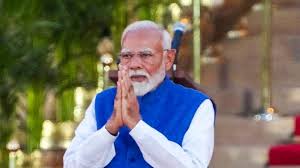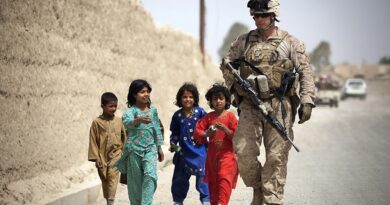Modi Sworn in for Historic Third Term as India’s Prime Minister, Supported by Coalition Allies
On Wednesday, final election results revealed that Modi’s BJP secured 240 seats, falling short of the 272 needed for a majority. Combined, the National Democratic Alliance (NDA) coalition parties won 293 seats in the 543-member lower house of Parliament.
Modi’s coalition government now heavily relies on two significant regional allies—the Telugu Desam Party in southern Andhra Pradesh and Janata Dal (United) in eastern Bihar—to maintain its hold on power.
Meanwhile, Modi’s political rival, the INDIA alliance led by the revitalized Congress party, mounted a stronger-than-anticipated challenge, doubling its previous seat count to secure 232 seats.
Narendra Modi was elected on Sunday for an uncommon third consecutive term as India’s Prime Minister, supported by his coalition allies after his party fell short of securing a parliamentary majority in an unexpected election result.
Modi and his Cabinet ministers were sworn in by President Droupadi Murmu at the Rashtrapati Bhavan, India’s presidential palace in New Delhi.
At 73, Modi, a leader both popular and divisive, becomes only the second Indian Prime Minister after Jawaharlal Nehru to achieve a third five-year term.
The Hindu nationalist Bharatiya Janata Party (BJP), which achieved sweeping victories in 2014 and 2019, did not attain a sufficient majority to govern independently in the most recent national election. Nevertheless, Modi’s National Democratic Alliance (NDA) coalition secured enough seats to establish a government, with Modi remaining as Prime Minister.
This marks the first occasion under Modi’s leadership that the BJP has required the support of regional partners to form a government, following a decade of holding a parliamentary majority.
Narendra Modi was inaugurated on Sunday for an uncommon third consecutive term as India’s Prime Minister, supported by his coalition allies after his party fell short of securing a parliamentary majority in an unexpected election result.
Modi and his Cabinet ministers were sworn in by President Droupadi Murmu at the Rashtrapati Bhavan, India’s presidential palace in New Delhi.
At 73, Modi, a leader both popular and divisive, becomes only the second Indian Prime Minister after Jawaharlal Nehru to achieve a third five-year term.
The Hindu nationalist Bharatiya Janata Party (BJP), which achieved sweeping victories in 2014 and 2019, did not attain a sufficient majority to govern independently in the most recent national election. Nevertheless, Modi’s National Democratic Alliance (NDA) coalition secured enough seats to establish a government, with Modi remaining as Prime Minister.
This marks the first occasion under Modi’s leadership that the BJP has required the support of regional partners to form a government, following a decade of holding a parliamentary majority.
Critics, however, argue that Modi has eroded India’s democratic foundations and its secular identity, citing increased attacks by Hindu nationalists on minorities, especially Muslims, and a diminishing space for dissent and free media. His political adversaries have also criticized his economic policies, highlighting issues such as high unemployment and widening inequality despite robust economic growth.
The swearing-in ceremony on Sunday was attended by several South Asian leaders, including Bangladesh Prime Minister Sheikh Hasina, Sri Lankan President Ranil Wickremesinghe, Nepalese Prime Minister Pushpa Kamal Dahal, and Maldives President Mohamed Muizzu.





